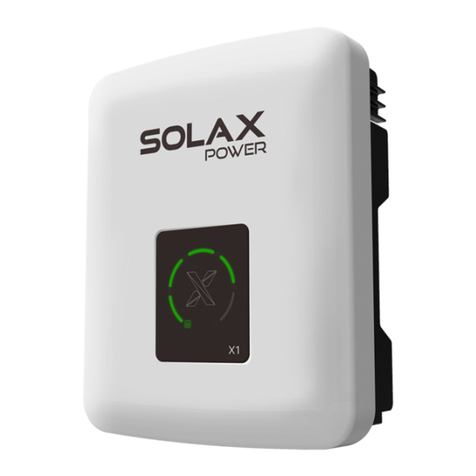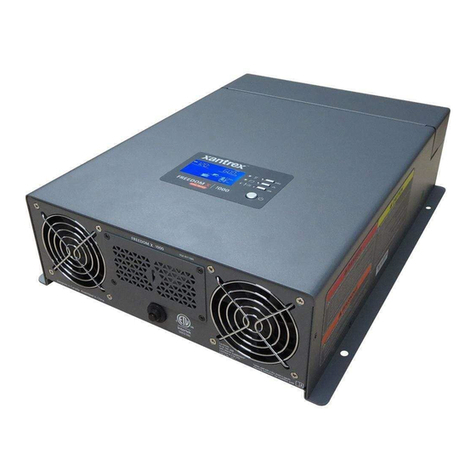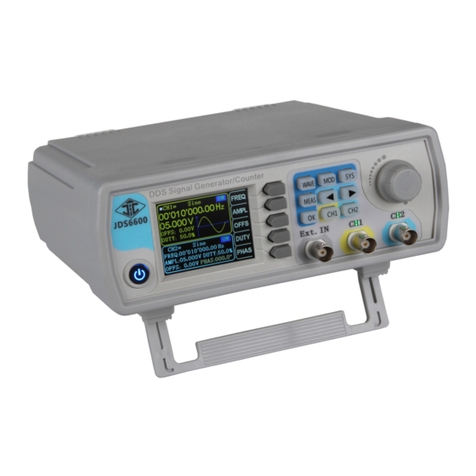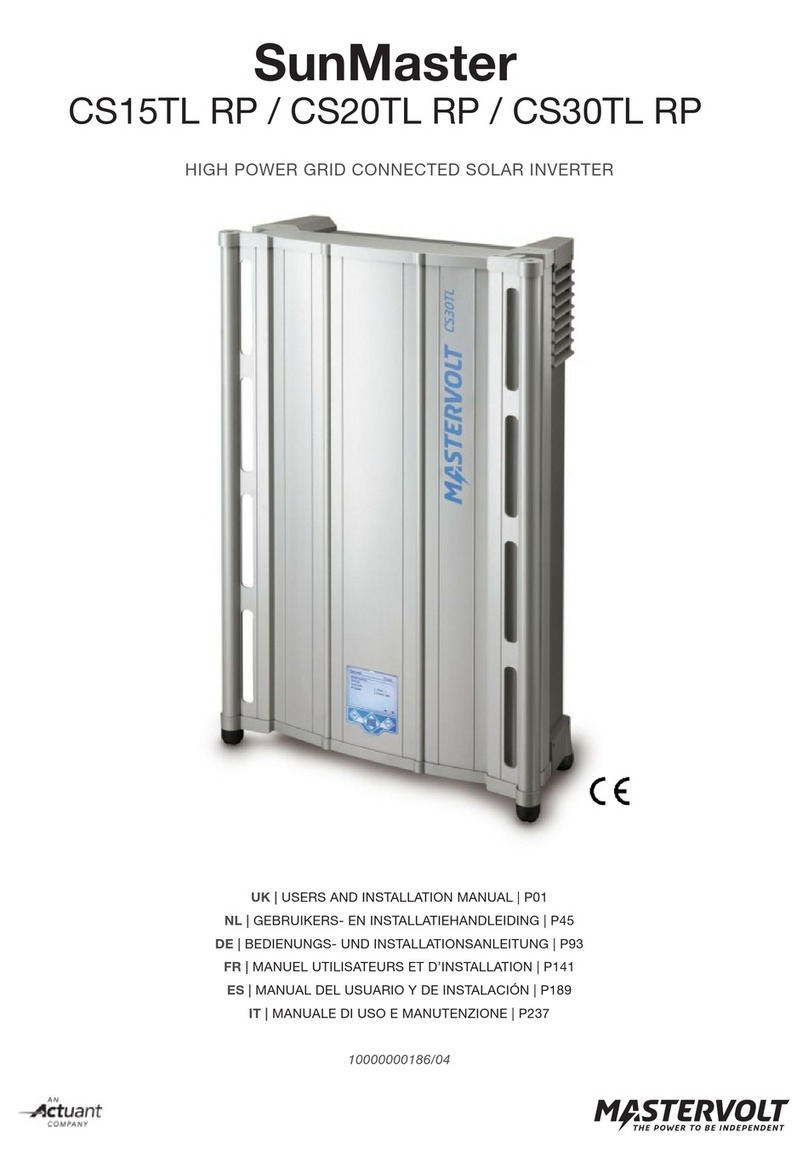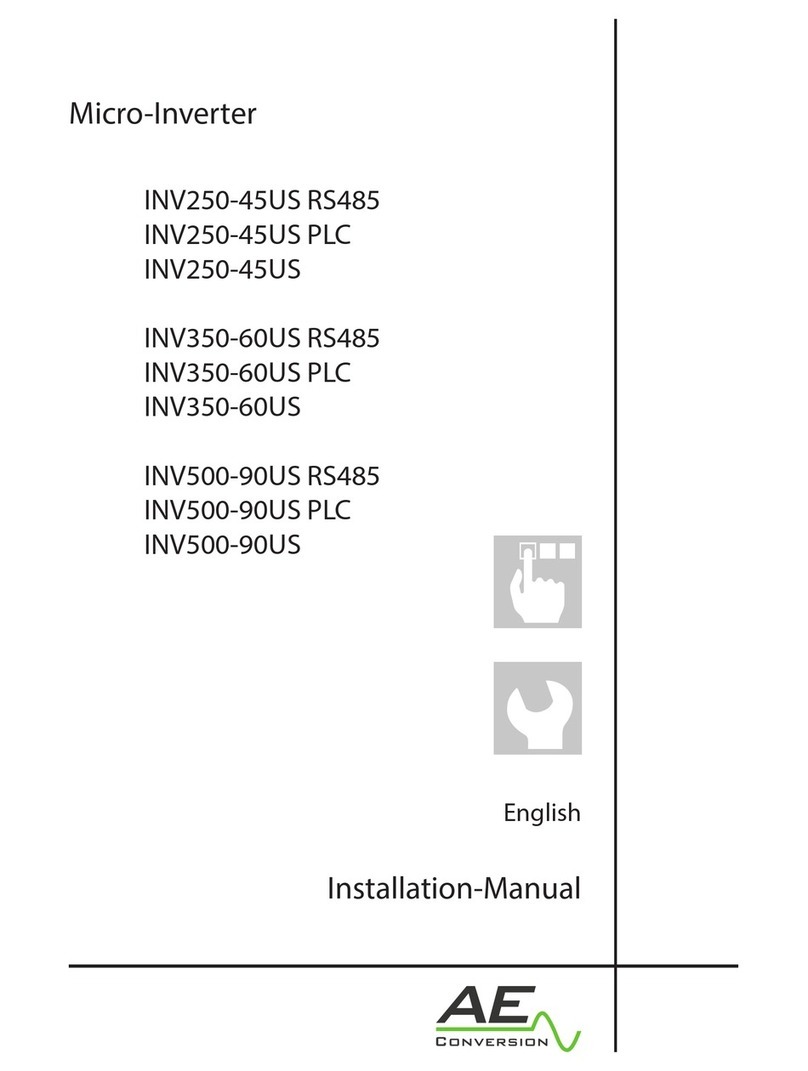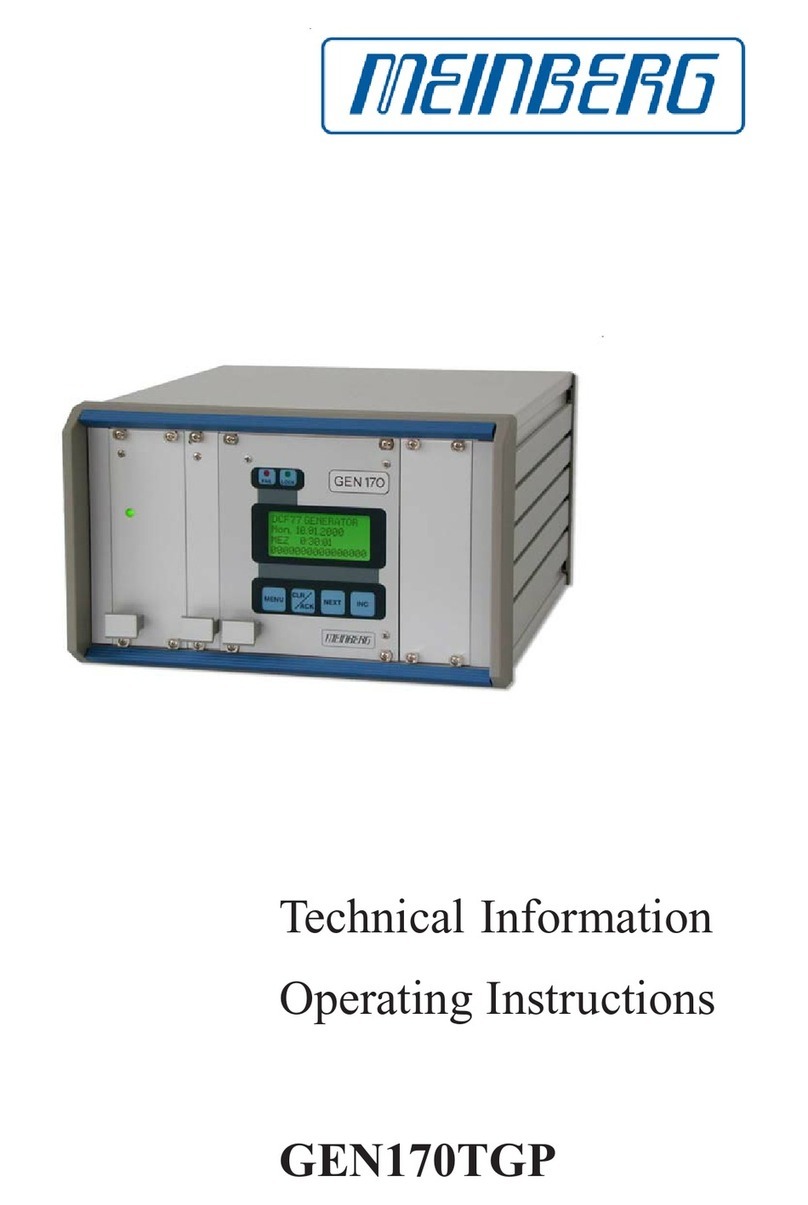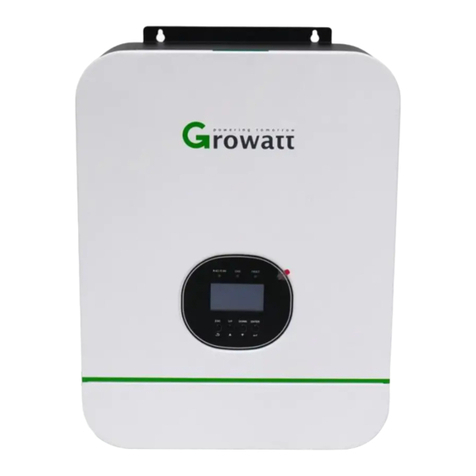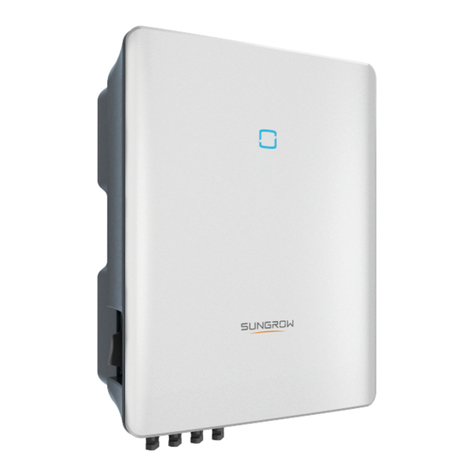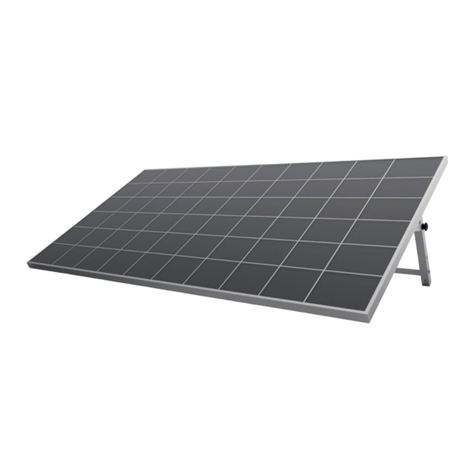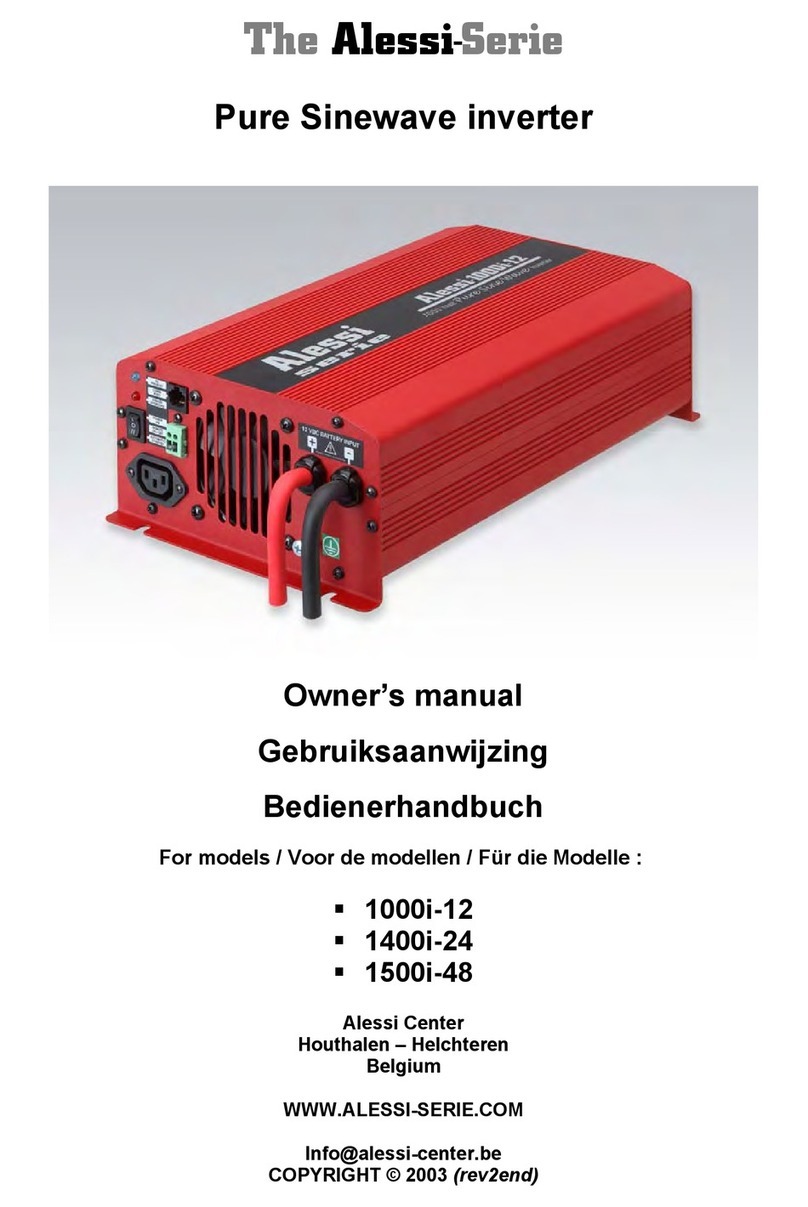Pramac GSW User manual

MANUALE
USO
E
MANUTENZIONE
USE
AND
MAINTENANCE
MANUAL
MANUAL DE
USO
Y
MANTENIMIENTO
MANTENIMIENTO
MANTENIMIENTO
MANTENIMIENTO
MANTENIMIENTO
MANTENIMIENTO
MANTENIMIENTO
MANTENIMIENTO
MANUEL D’
UTILISATIONET
DE
MAINTENANCE
MAINTENANCE
MAINTENANCE
MAINTENANCE
MAINTENANCE
MAINTENANCE
MAINTENANCE
MAINTENANCE
MANUAL DE
UTILIZAÇÃO
E
E
E
MANUTENÇÃO
MANUTENÇÃO
MANUTENÇÃO
MANUTENÇÃO
MANUTENÇÃO
MANUTENÇÃO
www.pramac.com

GSW
57

GSW
GENERAL INDEX
1.FOREWORD 59
1.1 Preamble 60
1.2 Symbols 60
1.3 Purpose of the manual and its preservation 60
1.4 Whom this manual is intended for and
personnel qualification 60
1.5 Technical assistance and spare parts service
61
2.DESCRIPTION AND TECHNICAL DATA 62
2.1 Identification of the generator 63
2.2 Certification of the generator 63
2.3 CE Declaration of Conformity 64
2.4 Description of the generator 64
2.5 Technical data 65
2.5.1 Overall dimensions 65
3.SAFETY 66
3.1 Intended use 67
3.2 Reasonably foreseeable misuse 67
3.3 Reasonably foreseeable misuse 68
3.4 Safety and warning signs 68
3.5 Airborne noise emission 70
4.INSTALLATION 71
4.1 Transport and positioning 72
4.1.1 Lifting the generator with adjustable
chains 72
4.1.2 Lifting the generator with a forklift 75
4.1.3 Transport and storage 75
4.1.4 Positioning 76
4.2 Connecting the utilities 76
4.2.1 Cable dimensions 76
4.2.2 Cable arrangement 76
4.2.3 Earthing the masses 77
4.2.4 Implementing the electrical connections
77
4.3 Connections for the automatic start up of the
generator 80
4.4 Commissioning operations 80
4.4.1 Visual checks 80
4.4.2 Checking the engine oil level 80
4.4.3 First fuel fill-up 80
4.4.4 Connecting the battery cables 80
4.5 Start up operations after a long idle period 81
5.USE 82
5.1 Safety precautions for use 83
5.2 Preliminary checks for use 83
5.3 Generator control panel 84
5.4 Electronic control board commands 86
5.5 Starting up the generator 87
5.6 Stopping the generator 88
5.7 Emergency stop of the generator 89
5.8 Manual refuelling 89
5.9 Using the generator at high altitudes or high
ambient temperatures 91
6.MAINTENANCE 92
6.1 Importance of maintenance 93
6.2 Safety precautions for maintenance 94
6.3 Electrical maintenance interventions 94
6.3.1 General checks on the electrical system
94
6.3.2 Checking the battery 95
6.4 Checking the alternator 95
6.5 Mechanical maintenance interventions 96
6.5.1 Checking and topping up the engine oil
level 96
6.5.2 Changing the engine oil and filter 96
6.5.3 Verifying the coolant level and topping
up 96
6.5.4 Replacing the coolant filter 97
6.5.5 Replacing the air filter 97
6.5.6 Replacing the fuel pre-filter and filter 98
6.5.7 Draining fuel from the tank 98
6.6 Maintenance schedule 99
6.6.1 Electrical system maintenance schedule
99
6.6.2 Maintenance schedule of the
mechanical parts 99
7.TROUBLESHOOTING 100
7.1 Problems, causes and solutions 101
8.PLACING OUT OF SERVICE AND SCRAPPING
104
8.1 Safety when placing out of service and
scrapping 105
8.2 Placing out of service for long periods 105
8.3 Decommissioning and scrapping 106
8.3.1 Special waste disposal requirements 106
9.SPECIFICATIONS 107
9.1 Information concerning lubricants, liquids and
coolants 108
9.2 Derating due to environmental conditions 110
10.ROUTINE AND EXTRAORDINARY
MAINTENANCE LOG 111
58

GSW
1.1 Preamble
Thank you for having purchase this
generator!
This manual is an integral part of the purchased
generator and provides useful guidelines for it to
work properly and for maintenance purposes. It is
mandatory to refer to the instructions provided for
your own safety and that of the persons involved
and the manufacturer must always be contacted if
any doubt should arise from the lack of or difficulty in
understanding the instructions.
This manual does NOT replace the laws and local
regulations in any way. Always comply with the law
and local regulations in the place where the
generator is used.
•This manual must always accompany the
generator throughout the operating period.
•The “original instructions” are compiled in
ITALIAN.
•Any other language is a “translation of the
original instructions”, in compliance with that
stipulated by the EU Directive 2006/42/EC.
•All rights for reproduction of this manual are
reserved to the manufacturer.
•The descriptions and illustrations provided in this
publication are not binding. The manufacturer
reserves the right to make any change deemed
necessary at any time and without prior notice.
•This manual cannot be reproduced or disclosed
to third parties without written authorisation from the
manufacturer.
1.2 Symbols
The following symbols and styles of the text listed
below are used in the manual to communicate
information regarding:
DANGER
Indicates a situation of imminent
risk, which can cause serious or
fatal injuries if not avoided.
WARNING
Indicates a situation of potential
risk, which can cause serious or
fatal injuries if not avoided.
ATTENTION
Indicates a situation of potential
risk, which can cause slight to
moderate injuries if not avoided.
NOTE
Indicates the obligation for certain
behaviour or special activities for
the machine to be handled safely.
1.3 Purpose of the manual
and its preservation
In compliance with that stipulated in the Machinery
Directive 2006/42/EC, this manual provides the
information regarding safety and the lifetime phases
of the generator (transport, installation, use,
maintenance and disposal).
•Carefully read and understand this technical
publication before operating on the generator and/or
adjusting and/or servicing.
•If in doubt while consulting this manual, always
contact the manufacturer before commencing any
operation.
•Please contact the expert personnel of the
manufacturer to resolve any problem that may arise
during the operating lifetime of the generator as
soon as possible, which has not been covered in this
technical publication.
•The manufacturer declines any liability related to
non-compliance of that stipulated in this manual.
•Keep this manual and all the attached
publications in a safe place, which is accessible and
known to all the users of the generator.
1.4 Whom this manual is
intended for and personnel
qualification
The generator has been designed to be used by
duly qualified personnel and the content of this
manual is intended for such personnel.
The personnel must receive adequate technical
training and be familiar with commonly used tools:
spanners, screwdrivers, etc.
60 1.FOREWORD

GSW
The personnel must have read and understood this
entire manual. The operator must be aware of the
operating modes of the generator, be able to follow
the user instructions provided in the manual and pay
utmost attention when using the generator.
Besides hazards deriving from electricity, those
related to explosive and flammable substances must
be considered (fuel and lubricating oils) as well as
those related to moving parts, combustion gases,
hot parts and waste products one can come in
contact with (e.g. spent lubricant, coolant, etc.).
1.5 Technical assistance and
spare parts service
In order to guarantee after-sales service of the
purchased generator to the users and a continuous
update on the range of products and solutions, the
manufacturer provides the following services on
internet.
A) Technical assistance and spare parts service.
A technical area that allows you to contact qualified
operators whom to refer to, to request assistance
and spare parts.
http://www.pramacparts.com
B) A sales and products area.
The main area for products and solutions from
where you can access the sales department and
sales network.
http://www.pramac.com
1.FOREWORD 61

GSW
2.1 Identification of the
generator
The generator is identified by a special identification
plate (1), which is compliant with the requirements of
the Machinery Directive 2006/42/EC, affixed on the
metal frame.
WARNING
It is strictly prohibited to remove
the identification plate (1) from the
generator or to alter or delete the
data on the plate itself.
NOTE
The identification plate (1) is
designed to last. However, it is
recommended to take note of the
data on the plate in order to have
them stored. Contact the
manufacturer if the plate must be
replaced.
OPENSET
S
OUNDPROOF
The “CE” symbol (2) may not be present on the
plate. Refer to the following "Certification of the
generator" paragraph for further details.
The generator is uniquely identified according to the
model (3), the machine code (4), the serial number
(5) and the year of manufacture (6).
NOTE
The model data plate (3), machine
code (4), serial number (5) and year
of manufacture (6) may be asked for
if technical assistance is requested.
The plate also indicates the weight
(7) of the generator including the
circuit liquids (oil, coolant, etc.)
excluding the fuel. Consult this
information before proceeding with
the lifting operations.
2.2 Certification of the
generator
The generators marketed within the European
Community are accompanied by the relative CE
Declaration of Conformity, Annex IIA, of the EU
Directive 2006/42/EC. In this case, the identification
plate bears the “CE” symbol (see the “identification
of the generator” paragraph).
2.DESCRIPTION AND TECHNICAL DATA 63

GSW
The generators that do not belong to the category
described previously are constructed in compliance
with the technical standards harmonised with the EU
Directive 2006/42/EC, however, they are not
accompanied by the CE Declaration of Conformity;
in this case, the identification plate does not bear the
“CE” symbol (see the "identification of the
generator” paragraph).
2.3 CE Declaration of
Conformity
The CE Declaration of Conformity is attached to this
instruction manual
2.4 Description of the
generator
The paragraph identifies the main components of
the generator, which are normally supplied as
standard. Additional components, called "extras” can
be installed.
The generator is supplied with different diesel
engines and rated power outputs based on the
specific model.
Another difference is the possibility of choosing
between the OPEN SET and the SOUNDPROOF
model. The OPEN SET model is made up of a
bearing base upon which the main components are
mounted (engine, alternator, control panel, etc.).
The SOUNDPROOF generator, built with the same
criteria as OPEN SET, is equipped with soundproof
panels which completely enclose all the main
components mounted on the base.
OPEN SET
SOUNDPROOF
NOTE
Both models must be installed by
trained and qualified personnel. In
particular, OPEN SET models
installed within the European
Community must be positioned in a
safe place, which is only accessible
to trained and qualified personnel
and sufficiently sheltered against the
direct action of atmospheric agents.
# Component
1 Base
2Engine
3 Silencer
4Air filter
5Radiator
6Control panel
7 Utilities connection
8Alternator
9Soundproof panels
10 Doors
64 2.DESCRIPTION AND TECHNICAL DATA

GSW
2.5 Technical data
2.5.1 Overall dimensions
The overall dimensions provided refer to the models
listed in the table.
OPEN SET
Refer to the data provided in the technical
installation drawing supplied for the overall
dimensions.
Refer to the plate applied to the machine for the
weight and sound emission level (measured
according to the reference standard ISO8528-10).
SOUNDPROOF
Refer to the data provided in the technical
installation drawing supplied for the overall
dimensions.
Refer to the plate applied to the machine for the
weight and sound emission level (measured
according to the reference standard ISO8528-10).
SOUNDPROOF HIGH CAPACITY TANK
Refer to the data provided in the technical
installation drawing supplied for the overall
dimensions.
Refer to the plate applied to the machine for the
weight and sound emission level (measured
according to the reference standard ISO8528-10).
2.DESCRIPTION AND TECHNICAL DATA 65

GSW
3.1 Intended use
The generators described in this manual are
designed and built for professional use to supply
electricity by means of a combustion engine coupled
with an electric generator. The generators are solely
suitable for land use, outdoors as well as indoors, in
compliance with the environmental limits and those
of the installation conditions stipulated by the
manufacturer.
The generator must always be positioned according
to the instructions found in the installation diagram
provided by the manufacturer.
Any other use is strictly prohibited and can lead to
safety hazards for the user and damage the
generator.
The generator is built in compliance with the
following EU Directives:
- 2006/42/EEC Machinery directive.
- 2006/95/EC Low voltage directive.
- 2004/108/EC Electromagnetic compatibility
directive.
- 2000/14/EC Environmental noise emission
by machinery and equipment
intended for outdoor use.
In order to help the planning phase, EU standards
harmonised with the EU Directives and/or
international product standards may have been
applied, particularly:
- EN 12601 Reciprocating internal
combustion engine driven
generating sets – Safety.
- ISO 8528 Reciprocating internal
combustion engine driven
alternating current generating
sets.
3.2 Reasonably foreseeable
misuse
DANGER
Improper use of the generator is
extremely hazardous. The
manufacturer declines any liability
for any damage to people, objects
and/or animal deriving from
improper use of the generator.
Reasonably foreseeable misuse refers to any use other
than that intended (for which the generator has been
designed), carried out with methods other than those
intended or specifically forbidden in the manual.
The following cases of evident product misuse can
be indicated beforehand based on the
manufacturer's experience:
•It is FORBIDDEN to activate the generator in
closed areas without making sure there is adequate
ventilation; when installed indoors, it is mandatory to
expel the exhaust gases deriving from combustion
outside the rooms where the generator is installed or
at a safe distance from where it operates and/or the
user is, by means of ducts or other suitable devices
for this purpose.
•It is FORBIDDEN to use the generator on
tilted surfaces that could block the flows of oil and
fuel required for operation.
•It is FORBIDDEN to use the OPEN SET type
of generator outdoors without having set up
adequate protection against atmospheric agents
such as water, snow and frost. If used outdoors, the
environmental limits stipulated by the manufacturer
must be complied with.
•It is FORBIDDEN to use the generator in
environments classified according to the EU ATEX
Directive 1999/92/EC, where an explosive
atmosphere is likely to be formed or lasts for brief or
long periods during regular operation.
•It is FORBIDDEN to use the generator to
warm up an environment by means of the heat
radiated from the engine.
•It is FORBIDDEN to use the generator when
faults or malfunctions are noted.
•It is FORBIDDEN to allow people who have
not reached the minimum age applicable by law in
the respective countries of use to use and service
the generator and who have not been previously
informed and trained on the residual risks posed
while working on the generator.
•It is FORBIDDEN to allow people to use and
service the generator before having read and
understood the instructions provided in the manual.
•It is FORBIDDEN to carry out installation, use
and servicing operations for which information has
not been provided by the manufacturer.
•It is FORBIDDEN to carry out installation, use
and servicing operations if the instructions provided
by the manufacturer are difficult to be understood.
•It is FORBIDDEN to carry out installation, use
and servicing operations differently from that
described in the manual.
•It is FORBIDDEN to carry out installation, use
and servicing operations that are specifically
prohibited in the manual.
3.SAFETY 67

GSW
•It is FORBIDDEN to carry out installation, use
and servicing operations that are specifically
prohibited in the manual.
•It is FORBIDDEN to refuel and perform
maintenance while the generator is ON or on
surfaces that are not flat.
•It is FORBIDDEN to refuel immediately after
switching off the generator, when the engine is still
hot; wait for the engine to cool down before
refuelling and make sure that it is on a perfectly level
surface.
•It is FORBIDDEN to remove the loads from
the 63A and over sockets before having
disconnected them by opening the corresponding
switches.
•It is FORBIDDEN to apply electric loads
whose power, voltage and/or current exceeds the
maximum nominal specifications of the generator.
Comply with the technical specifications provided.
•It is FORBIDDEN bypass the guards or safety
devices, even temporarily. The guards and safety
devices can only be removed to perform
maintenance by expert personnel and when the
generator is OFF. Once maintenance is completed,
all the guards and safety devices that have been
removed must be refitted in their original position
and their correct operation must always be verified.
•It is FORBIDDEN for people to come near the
OPEN SET generator unless they are assigned to
use and service it.
•It is FORBIDDEN to use the SOUNDPROOF
generator when the hood is totally or partially
removed or if the doors are open.
DANGER
Using the SOUNDPROOF generator
with the bonnet fully or partially
removed or with the doors open is
extremely dangerous and can cause
serious burns and/or injuries due to
contact with internal parts of the
generator. It is prohibited to
approach the engine suction zone
with long loose hair or baggy
clothing.
3.3 Reasonably foreseeable
misuse
The type of personal protective equipment (PPE)
and their use in the European Community is
governed by the EU Directive 89/686/EEC and
89/656/EEC and subsequent amendments.
Specific personal protective equipment (PPE) may
be required for certain operations. In this case,
pictograms are found on the generator and/or in the
manual, and their meaning is described in the
following table.
Pictogram Description
Obliged to always wear
protective gloves if the
operations pose generic
mechanical risks (e.g. crushing
or shearing).
Obliged to wear hearing
protection devices in accordance
with the noise risk assessment of
the relative work environment
and legislation in force in the
country of use.
3.4 Safety and warning signs
There are adhesive labels on the generator
indicating safety and warning signals, and their
meaning is described in the following table.
DANGER
It is forbidden to remove the
warning labels that have a safety
function. Failure to comply with
this regulation shall render the
warranty null and void and result in
the buyer bearing full responsibility.
68 3.SAFETY

GSW
Description Precaution
Electrical hazard deriving
from the presence of live
parts.
The generator supplies
power when it is ON,
therefore be very careful
not to come in contact
with parts of the electrical
system.
•
Pay attention to the
areas close to the
alternator and electrical
connection points.
•
Keep a safe distance
so as to prevent hazards
deriving from direct or
indirect contact being
made with live parts or
equipment.
•
Comply with the safety
regulations and use the
relative PPE when
carrying out operations
(protective gloves against
electrical hazards).
•
Implement the
connections of the cables
with the generator OFF.
•
Perform maintenance
on the electrical parts with
the generator OFF and
after having verified there
is no voltage residue.
•
Do not use water if the
generator catches fire.
Hazards deriving from
contact being made with
hot parts.
The engine and the
silencer become hot
during use and remain so
for over an hour after
being switched off.
•
Do not touch the hot
parts when the generator
is ON and for at least one
hour after being switched
off.
•
Wait for the hot parts
to cool down before
performing maintenance.
Risk of fire.
Fuel is highly flammable.
•
It is FORBIDDEN to
smoke or use naked
flames near the tank and
fuel when refuelling.
•
Refuel in a well
ventilated area and
always dry any fuel leak
before starting the engine.
Description Precaution
Hazards deriving from
inhalation of toxic and
harmful substances.
Fumes containing
poisonous substances are
emitted from the silencer
into the air while the
generator engine is ON.
The fumes contain
substances that are
harmful for the health,
such as nitrogen oxides,
carbon monoxide,
unburned hydrocarbons,
etc.
•
Use the generator in
well ventilated
environments to disperse
the fumes.
•
If used in closed
environments, convey the
fumes outside by following
the instructions provided
in the installation diagram.
•
Do not stop near the
silencer and do not
breathe in the emitted
fumes.
Hazards deriving from
keeping the engine ON
during operation.
•
Switch the engine OFF
before refuelling the
generator.
•
Refuel only with the
engine OFF.
•
Make sure that the
generator is in a horizontal
position.
Fuel used DIESEL.
•
Only use diesel.
•
Choose the fuel
according to the outdoor
temperature. Use winter
type of diesel for
temperatures below 0 °C
and as low as -20 °C.
Generic hazard.
Various risks described in
the instruction manual.
•
Pay attention to all the
safety precautions and
warnings as well as to the
information regarding the
intended use and
reasonably foreseeable
misuse described in this
manual.
3.SAFETY 69

GSW
Description Precaution
Always refer to the
instruction manual.
The complete instructions
to use and service the
generator are present in
the use and maintenance
manual.
•
Read and understand
the instructions provided
in the instruction manual.
•
If the instructions are
missing or not clear,
always contact the
manufacturer before
operating on the
generator.
•
Always keep the use
and maintenance manual
near the generator, in
place that is known and
accessible to all the users.
Sound power level (Lwa)
measured in compliance
with the Noise Directive
2000/14/EC.
When the generator is
ON, it can cause damage
to the auditory system if
you stop near it for brief
and long periods of time.
•
Wear individual
hearing protective devices
(PPE) according to the
noise risk assessment of
the relative work
environment and in
accordance with the
legislation in force in the
country of use.
Indication of a lifting
anchor point.
Identify the devices and
lifting anchor points on the
generator.
•
Read and understand
the lifting instructions
provided in the specific
paragraph in this manual
before proceeding with the
lifting operations.
3.5 Airborne noise emission
The generators are subject to tests to detect the
sound pressure level of the A-weighted emission in
compliance with that stipulated by the Machinery
Directive 2006/42/EC.
The sound power value LwA in generators marketed
within the European Community is measured in
compliance with the EU Directive 2000/14/EC and
indicated on a special plate on the generator itself
and in the CE Declaration of Conformity.
70 3.SAFETY

GSW
4. INSTALLATION
4.INSTALLATION 71
4.1 Transport and positioning 72
4.1.1 Lifting the generator with adjustable
chains 72
4.1.2 Lifting the generator with a forklift 75
4.1.3 Transport and storage 75
4.1.4 Positioning 76
4.2 Connecting the utilities 76
4.2.1 Cable dimensions 76
4.2.2 Cable arrangement 76
4.2.3 Earthing the masses 77
4.2.4 Implementing the electrical connections
77
4.3 Connections for the automatic start up of the
generator 80
4.4 Commissioning operations 80
4.4.1 Visual checks 80
4.4.2 Checking the engine oil level 80
4.4.3 First fuel fill-up 80
4.4.4 Connecting the battery cables 80
4.5 Start up operations after a long idle period 81
4.INSTALLATION 71

GSW
4.1 Transport and positioning
WARNING
The following lifting, transport and
positioning operations must only be
carried out by specialised
personnel.
Always position the generator on a
flat, smooth and level surface.
NOTE
The lifting and transport procedures
describe the procedures
implemented by the manufacturer
when the generator is shipped from
the factory. This information is
provided in this manual for when the
generator must be lifted and
transported to the place where it
will be installed the first time or if it
is transferred to a different place.
NOTE
The generator must be handled with
adequate lifting means for the mass
to be lifted and the environment in
which it is lifted. The exact weight
of the generator is shown on the
identification plate (see the
“identification plate” paragraph).
4.1.1 Lifting the generator with
adjustable chains
Proceed as follows to lift the generator with
adjustable chains:
•Hook the lifting chains (1) in the relative anchor
points (2) set up on the generator. The lifting anchor
point is indicated on the machine by the relative
information sticker.
•Move away and gradually lift the generator,
verifying that it is balanced with respect to the centre
of gravity. Otherwise, lower the load until it rests on
the floor of the transport vehicle and adjust the
length of the chains according to the centre of
gravity.
OPEN SET: 3 lifting points
NOTE
It is mandatory to use all three lifting
points (2) set up on the base on the
control side and on the opposite side.
The lifting hook must be positioned as
close as possible to the centre of the
generator's lifting points to keep it
from swaying when lifted. Adjust the
length of the lifting chains (1) to
balance the load, to reduce its stress
and so that none of the chains can
come into contact with the
components while the generator is
being moved.
72 4.INSTALLATION

GSW
OPEN SET: 4 lifting points
NOTE
It is mandatory to use all four lifting
points (2) set up on the base on the
control side and on the opposite side.
The main lifting hook must be used
together with a rocker arm ( like when
lifting “SOUNDPROOF with EFT” identified
with the number (1)), which keeps the
lifting chains at a distance to prevent
them from coming into contact with
the generator. Adjust the length of the
lifting chains in order to balance the
load and to minimise the angle
between them (chains as vertical as
possible).
SOUNDPROOF: 1 lifting point
NOTE
It is mandatory to use the preset
lifting points (2) on the roof. The
lifting hook must be positioned as
close as possible to the vertical of
the generator's lifting ring to keep it
from swaying when lifted.
SOUNDPROOF: 2 lifting points
4.INSTALLATION 73

GSW
NOTE
It is mandatory to use both lifting
points (2) set up on the roof from the
control side and on the opposite
side. The brackets set up on the
lifting points are provided with 3
holes used to find the centre of
gravity. The lifting hook must be
positioned as close to the centre of
the generator's lifting points as
possible to keep it from swaying
when lifted. The length of the 2
lifting chains (1) must form an angle
of approximately 40° between the 2
chains: this limits the stress on the
lifting elements.
STANDARD SOUNDPROOF: 4 lifting points
Detail of the position of the lifting points below:
NOTE
It is mandatory to use all 4 lifting
points (2) set up on the roof: 2 from
the controls side and the other 2 on
the opposite side. The main lifting
hook (3) must be positioned as close
to the centre of the generator's four
lifting points as possible to keep it
from swaying when lifted. If
necessary, adjust the length of the
lifting chains to balance the load. The
length of the 4 lifting chains (1) must
form an angle of approximately 40°
between the 2 chains: this limits the
stress on the lifting elements.
SOUNDPROOF with “EFT” (Extended Fuel
Tank): 4 lifting points
74 4.INSTALLATION

GSW
NOTE
It is mandatory to use all 4 lifting
points (2) set up on the oversized
tank: 2 from the controls side and 2 on
the opposite side. The main lifting
hook (1) must be used together with a
rocker arm (1), which keeps the lifting
chains at a distance to prevent them
from coming into contact with the
generator. Adjust the length of the
lifting chains in order to balance the
load and to minimise the angle
between them (chains as vertical as
possible).
4.1.2 Lifting the generator with
a forklift
NOTE
Machines with NO lifting rings can
ONLY be lifted by means of a forklift.
In such instances, it is PROHIBITED to
lift the machine in any other way.
Proceed as follows to lift the generator with a forklift:
•Insert the forks of the forklift (1) under the base of
the generator (2), in line with the centre of gravity.
•Make sure that the forks of the lifter support the
generator along its width as explained in the figure
(3).
•Gradually lift the generator, verifying that it is
balanced with respect to the centre of gravity.
Otherwise, lower the load until it rests on the floor of
the transport vehicle and adjust the position of the
forks according to the centre of gravity.
4.1.3 Transport and storage
Proceed as follows when transporting the generator:
•The generator can ONLY be transported with fuel
on vehicles that are approved and certified to
transport equipment containing fuel. Otherwise,
empty the fuel tank completely before transporting
the generator.
•Block the generator securely on the transport
vehicle with devices that are suitable for the
purpose, so as to avoid it moving or tipping over
while the vehicle moves.
•When transporting the OPEN series generator on
an open vehicle, do not leave the generator exposed
to direct sunlight or the weather for long periods of
time. Protect it with sheets or other adequate
material.
•When transporting the generator on a closed
vehicle, the temperatures inside the load
compartment could cause the liquids to evaporate,
thereby posing a risk of fire and explosion. Empty
the fuel tank IF the vehicle is not approved and
certified to transport fuel.
4.INSTALLATION 75
Table of contents
Other Pramac Inverter manuals
Popular Inverter manuals by other brands

CyberPower
CyberPower Powertrip 480 user guide
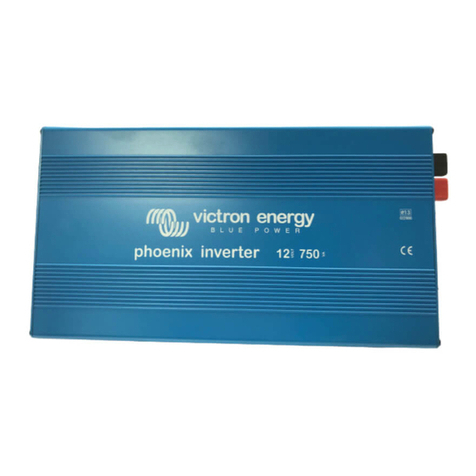
Victron energy
Victron energy Phoenix 12/750 manual
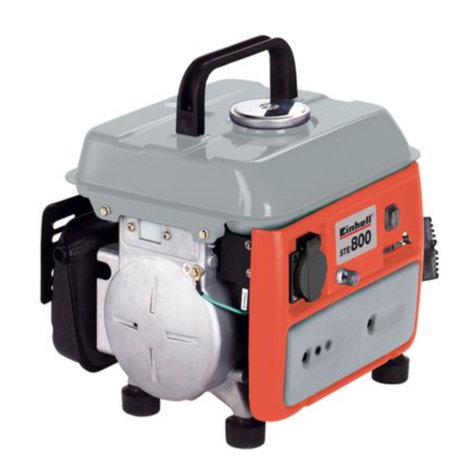
EINHELL
EINHELL STE 800/1 operating instructions

Toshiba
Toshiba TOSVERT VF-S15 series Communication Function Manual

Growatt
Growatt MIN 2500TL-XA Installation & operation manual

Universal Motors
Universal Motors UMP0 IP55 Operation manual




